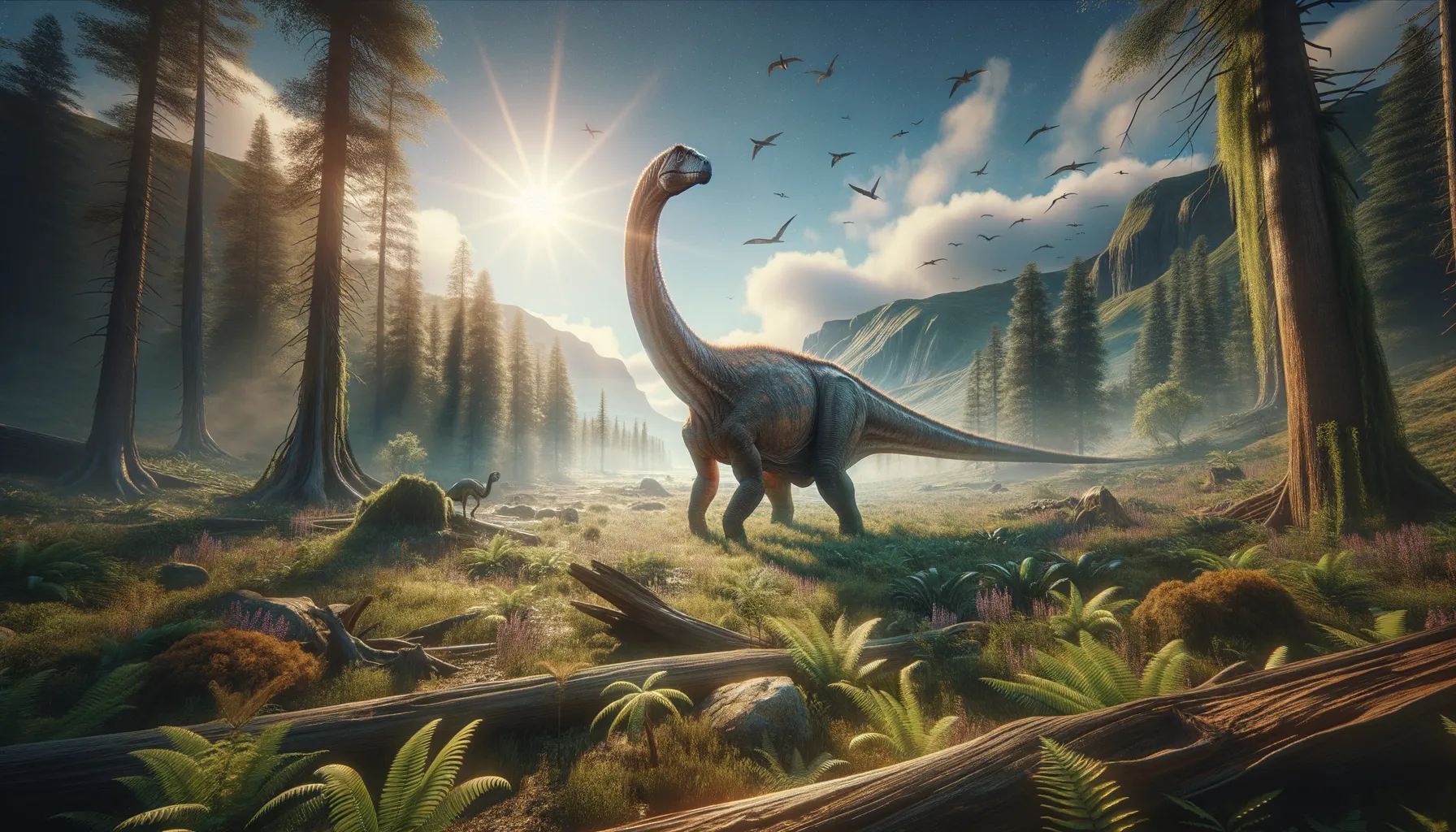
Hypselosaurus
Giants of the Cretaceous era!
Period
Cretaceous
Length
Around 40 feet long.
Height
Approximately 10 feet at the shoulders.
Weight
Estimated to weigh around 15 tons.
Hypselosaurus, a long-necked dinosaur, lived during the Late Cretaceous period and is known for its large size and herbivorous diet. It roamed ancient Europe and is believed to have been one of the heaviest dinosaurs of its time. Its fossilized eggs, among the largest ever discovered, have provided key insights into dinosaur reproduction.
Diet
Hypselosaurus was an herbivore, feeding on a variety of plants. Its diet likely consisted of leaves and branches from tall trees, which it could reach with its long neck.
Hunting
As a herbivore, Hypselosaurus did not hunt other animals. Instead, it likely spent its days foraging for vegetation.
Environmental challenges
Hypselosaurus faced predation threats from large carnivorous dinosaurs. It also had to adapt to changing climates and landscapes during the Cretaceous period. Natural disasters and volcanic activities may have posed additional challenges.
Speed
Hypselosaurus was relatively slow-moving.
Lifespan
Estimated to have lived for several decades.
First discovery
First discovered in France in the 19th century.
Fun Facts
- Hypselosaurus was one of the largest dinosaurs, with some estimates suggesting it could reach up to 15 meters long.
- This dinosaur lived during the Late Cretaceous period, about 70 to 66 million years ago, mainly in what is now France.
- Hypselosaurus is known from fossilized eggs that are among the largest ever discovered, some being as big as 1 foot in diameter.
- Unlike many other dinosaurs, Hypselosaurus is mostly known from these giant eggs and some limb bones, with very few complete skeletons found.
- The name 'Hypselosaurus' means 'high-ridged lizard,' which might refer to the vertebrae structure inferred from fossil evidence.
- Hypselosaurus was a type of sauropod, which means it was a long-necked, herbivorous dinosaur similar to the more famous Brachiosaurus.
- Despite its size, Hypselosaurus likely had a slow-paced lifestyle, spending much of its time browsing for plants to eat.
Growth and Development
Hypselosaurus grew slowly over many years to reach its enormous size. It likely experienced a juvenile stage where growth was rapid before slowing down as it matured. Fossilized eggs suggest a high degree of parental investment.
Habitat
Hypselosaurus lived in what is now Europe, which was a warm and lush environment during the Cretaceous period. It likely inhabited river valleys and floodplains where vegetation was abundant. The availability of plants provided essential nutrition for survival.
Interaction with other species
Hypselosaurus interacted with other herbivorous dinosaurs, with whom it shared its habitat. Its size likely deterred many predators, though it needed to be watchful of theropods. Competition for food resources may have existed with other large herbivores.
Natural lifespan
Hypselosaurus likely lived up to 70-80 years naturally.
Reproduction
Hypselosaurus reproduced by laying eggs, which could have been incubated under vegetation or sand. Fossilized nests suggest that it laid several large eggs at a time, likely to increase the chances of offspring survival.
Social behaviour
Hypselosaurus may have lived in herds or family groups, providing protection against predators. Social behavior could have included mutual support in raising young and locating food. Communication within the group was likely important for coordination.
Fossil locations
Fossils and egg remains have been predominantly found in southern France. These discoveries provide crucial insights into its existence and reproductive habits. The site of discovery is significant for its abundance of dinosaur eggs.
